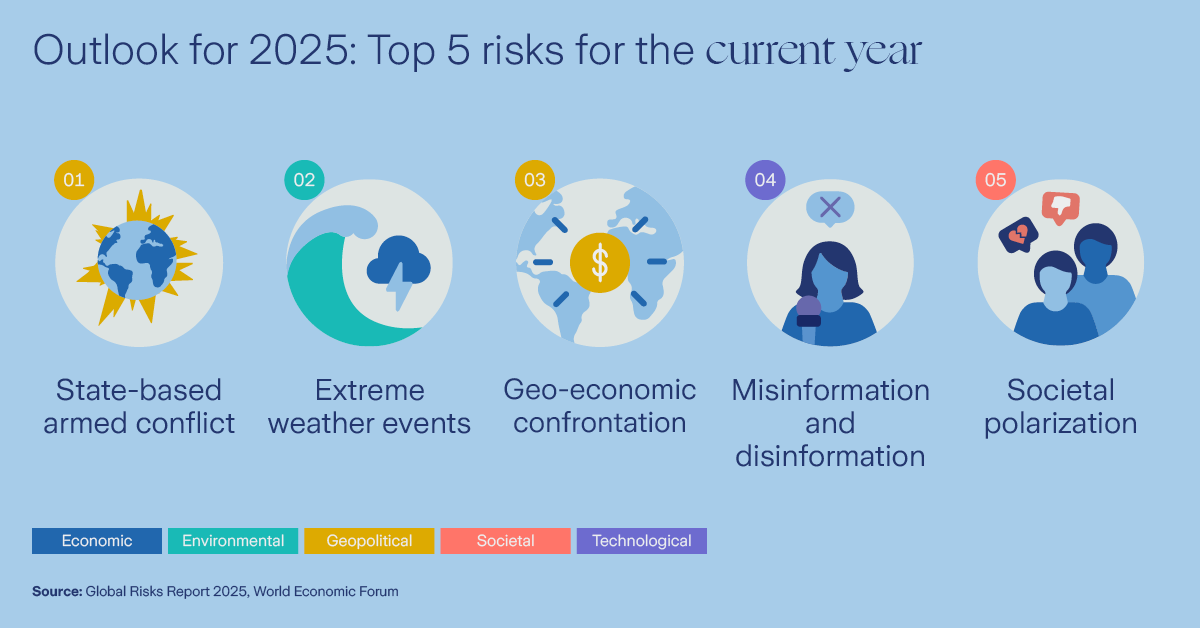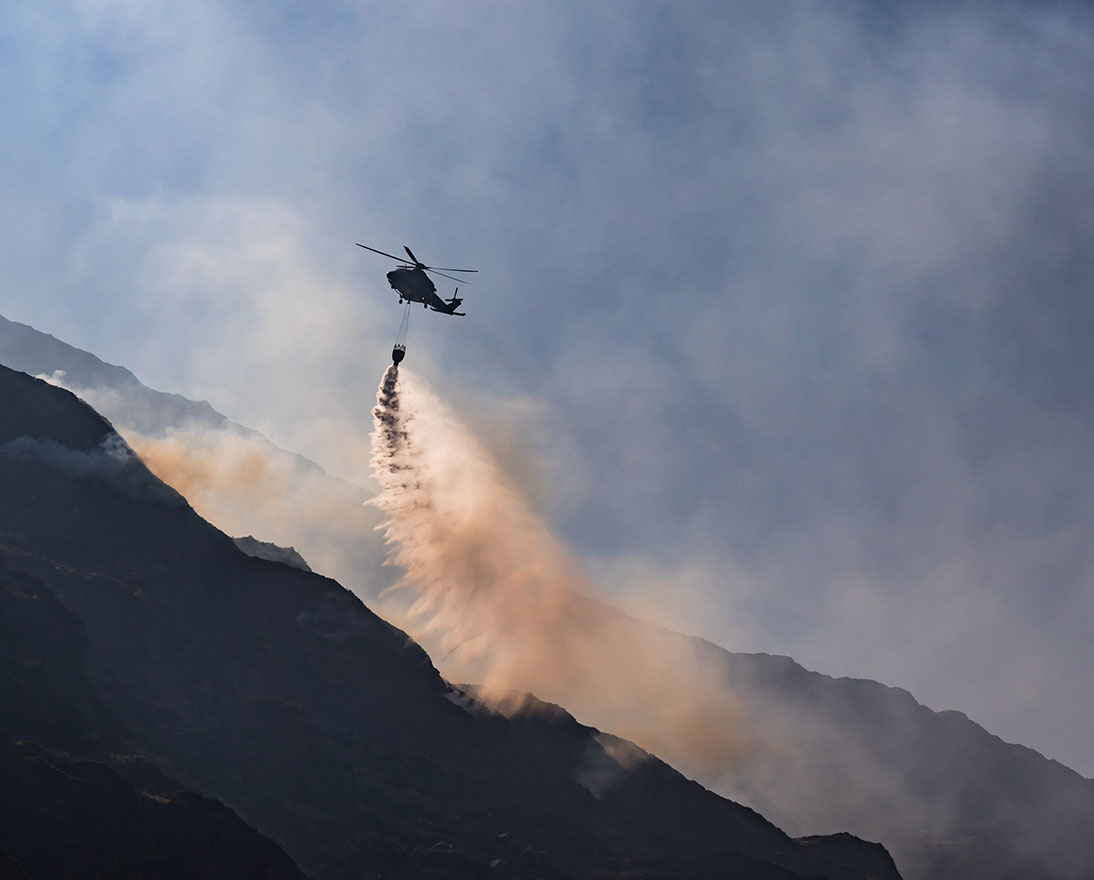The Global Risks Report: These are the top risks facing the world in 2025
Global risksArticleJanuary 15, 2025
The Global Risks Report 2025 shows a world facing short-term shocks which risk derailing efforts on long-term threats such as the climate crisis.
State-based armed conflict is the biggest risk of 2025, creating a tinderbox context in which leaders must also manage escalating long-term environmental and social threats.
This was among the key findings of the Global Risks Report 2025, developed by the World Economic Forum. It presents the results of the Global Risks Perception Survey (GRPS), which captures insights from more than 900 global experts.

The survey paints a troubling picture of a world facing short-term shocks which risk derailing efforts to build resilience in the face of devastating environmental threats. When asked to select the one risk most likely to “present a material crisis on a global scale” in 2025, 23 percent of respondents chose state-based armed conflict, followed by 14 percent for extreme weather events and 8 percent for geo-economic confrontation. These risks are compounded by a fraying social fabric with “misinformation and disinformation”, followed by societal polarization, completing the top five for the coming year.
With January headlines already spanning everything from deadly wildfires in Los Angeles to geopolitical clashes, it’s not hard to see the research playing out in reality. But as Peter Giger, Group Chief Risk Officer at Zurich Insurance Group, explains:
When we talk about global risks, we tend to focus on the immediate. That’s understandable, but the real story stretches further. The long term isn’t as far away as we think. Every decision we make today moves us closer to resilience or further into crisis.
Looking ahead, the experts surveyed expect social and cyber risks to gain prominence by 2027, with “misinformation and disinformation” taking the top spot and “cyber espionage and warfare” ranked fifth, as AI advances continue. Extreme weather events remained in second place, with state-based conflict in third and societal polarization in fourth. Overall, over half of respondents expect some instability within two years – with the outlook deteriorating as the mechanisms for multilateral cooperation begin to buckle.

As the next decade unfolds, all 33 risks covered in the ranking are expected to increase in severity, with “64 percent of experts anticipating a fragmented global order marked by competition among middle and great powers”, according to the World Economic Forum. By 2035, environmental risks are expected to dominate the top five, reflecting a failure in international action on climate change.
Extreme weather events – which already cost the global economy more than USD 2 trillion over the past decade – take the top slot for 2035, followed by “biodiversity loss and ecosystem collapse”, “critical change to Earth systems” and “natural resource shortages”.

All these threats intersect with economic risks, which weigh heavily on the minds of business leaders. A separate Executive Opinion Survey published in December found that an economic downturn, labor shortages and inflation were top concerns in the G20 for 2025.
These are turbulent waters – even without considering the unexpected events that could profoundly impact our world. Any one of the under-the-radar risks covered by the GRR – from “non-weather-related natural disasters” such as volcanic eruptions, to pandemics and organized crime – could further thwart global progress.
What does all this mean for decision-makers in international businesses? As Peter Giger explains:
The challenges may be daunting but they must be faced head on. Any delay will only amplify vulnerabilities in the future. The first step is to proactively map risks and their interconnections right across the different categories, before focusing on building long-term resilience into operations. It’s worth remembering that inside every crisis is an opportunity. Responsible businesses have a positive role to play in a fragile world, not only as an important element of local economies but also as active contributors to innovation and stability.
Commercial Insurance Risk Insights
Our experts share their insights on the current risk landscape to help you address and manage emerging risks.




